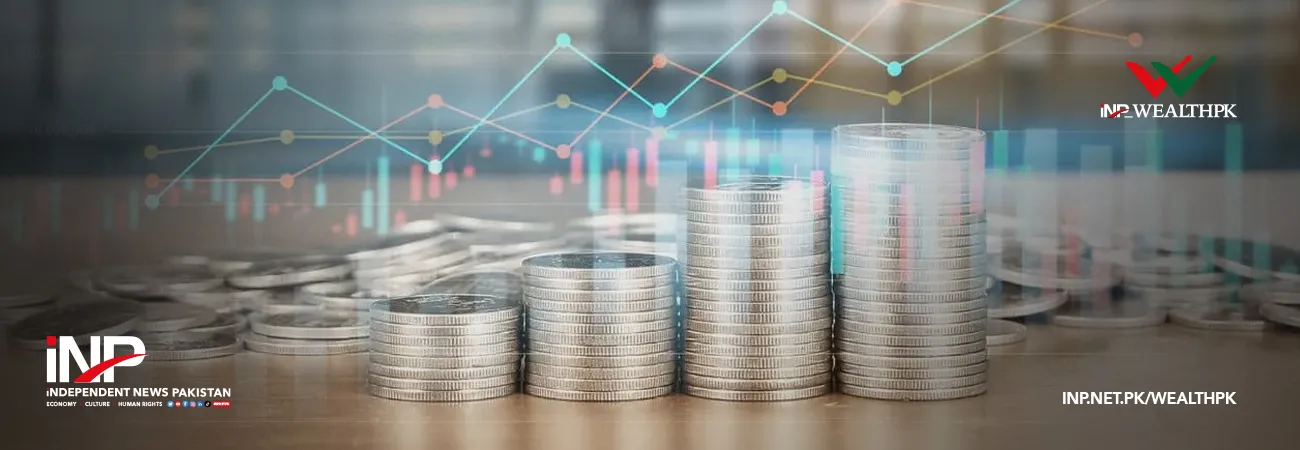INP-WealthPk
Qudsia Bano
Pakistan's economic outlook continues to see a significant improvement, marked by prudent policy management and renewed inflows from multilateral and bilateral partners according to the monthly economic outlook report for the month of March 2023, reports WealthPK. The country has successfully concluded the International Monetary Fund's Stand-By Arrangement (SBA) program, securing a substantial disbursement of $1.1 billion, signaling a milestone in its economic reform journey. The ongoing efforts in policy and reform have alleviated pressures on the gross financing needs, which have been exacerbated by the rising external and domestic financing demands amid an uncertain global environment. In the real sector, agriculture emerges as a bright spot, with the outlook for the sector promising. In the Rabi season of 2023-24, wheat sowing has exceeded the targets, reaching 8.998 million hectares. Additionally, indicators such as tractor production and sales, as well as agriculture credit disbursement, have witnessed an impressive growth in FY2024, with tractor production up by 68.6 percent and sales by 67.6 percent, and agriculture credit disbursement rising by 34.7 percent to Rs1,279.4 billion, according to the data released by the Ministry of Finance.
The Large-Scale Manufacturing (LSM) sector, for instance, saw a marginal decline of 0.5 percent during July-January FY2024, but displayed year-on-year growth in January 2024, increasing by 1.84 percent compared to January 2023. Headline inflation, a longstanding concern, has shown signs of improvement, dropping to 23.1 percent in February 2024 from 31.5 percent a year earlier. The major drivers of inflation include alcoholic beverages & tobacco, housing, water, electricity, gas & fuel, furnishing & household equipment maintenance, clothing & footwear, perishable food items, non-perishable food items, and transport. The efforts to mitigate inflationary pressures include the implementation of Ramadan Relief Package aimed at providing food subsidies to low-income groups. On the fiscal front, while the primary surplus has increased significantly to Rs1939 billion during Jul-Jan FY2024 from Rs945 billion last year, the fiscal deficit has widened slightly to 2.6 percent of GDP compared to 2.3 percent recorded last year. However, the government remains committed to prudent fiscal management through cautious expenditure and effective resource mobilization.
The current account deficit has narrowed notably, posting a deficit of $1.0 billion for Jul-Feb FY2024 as against a deficit of $3.9 billion last year, with February 2024 witnessing a surplus of $128 million compared to a deficit of $50 million in the same period last year. YoY exports increased by 16.2 percent to $2.6 billion in February 2024 as compared to $2.2 billion in February 2023, while YoY imports also increased by 10.2 percent to $4.3 billion in February 2024 as compared to $3.9 billion in the same month last year. Foreign Direct Investment (FDI) witnessed an inflow of $131.2 million in February 2024 compared to an outflow of $173 million in the last month. Remittances also showed an upward trend, increasing by 13.0 percent in February 2024 ($2.2 billion) as compared to February 2023 ($1.9 billion). The State Bank of Pakistan (SBP) maintained the policy rate at 22 percent on 18th March 2024 due to the susceptible inflation outlook to risks amidst elevated inflation expectations. During 1st July–1st March FY24, money supply (M2) registered a growth of 3.8 percent (Rs1192.1 billion) compared to 1.14 percent growth (Rs313.9 billion) in the last year. Efforts to sustain economic stability and reform momentum remain crucial, especially in meeting the upcoming financing needs and ensuring the stability of the external sector in the remaining months of the fiscal year.
Credit: INP-WealthPk













